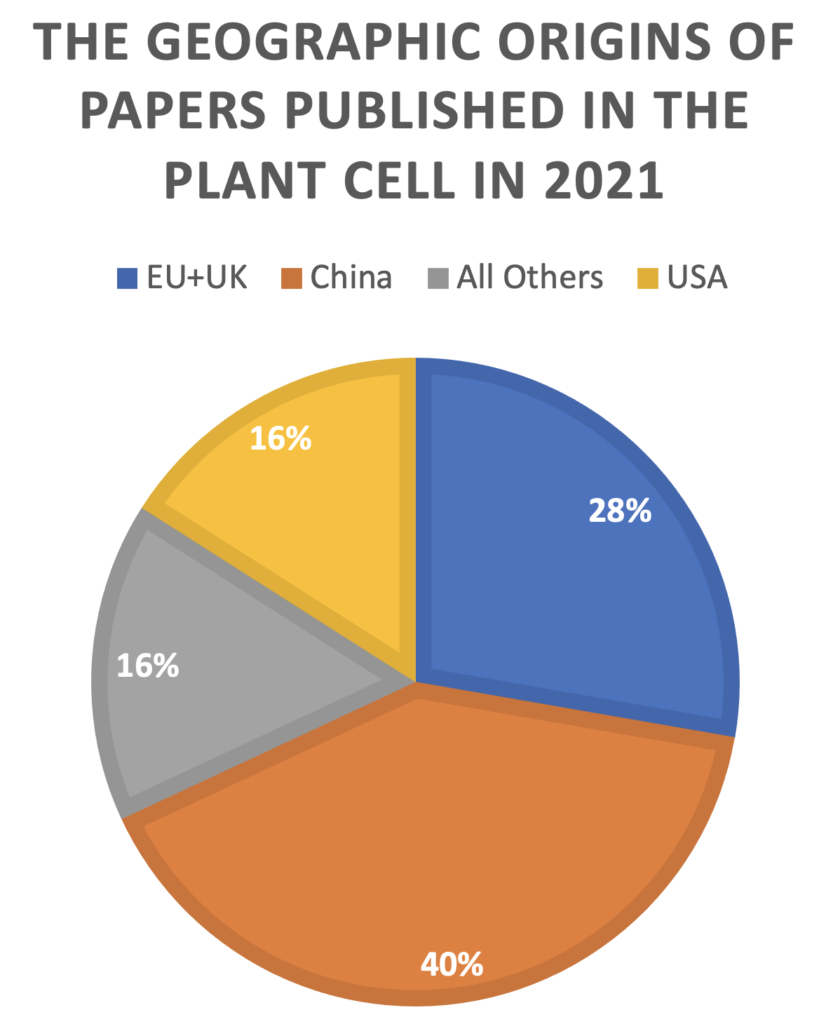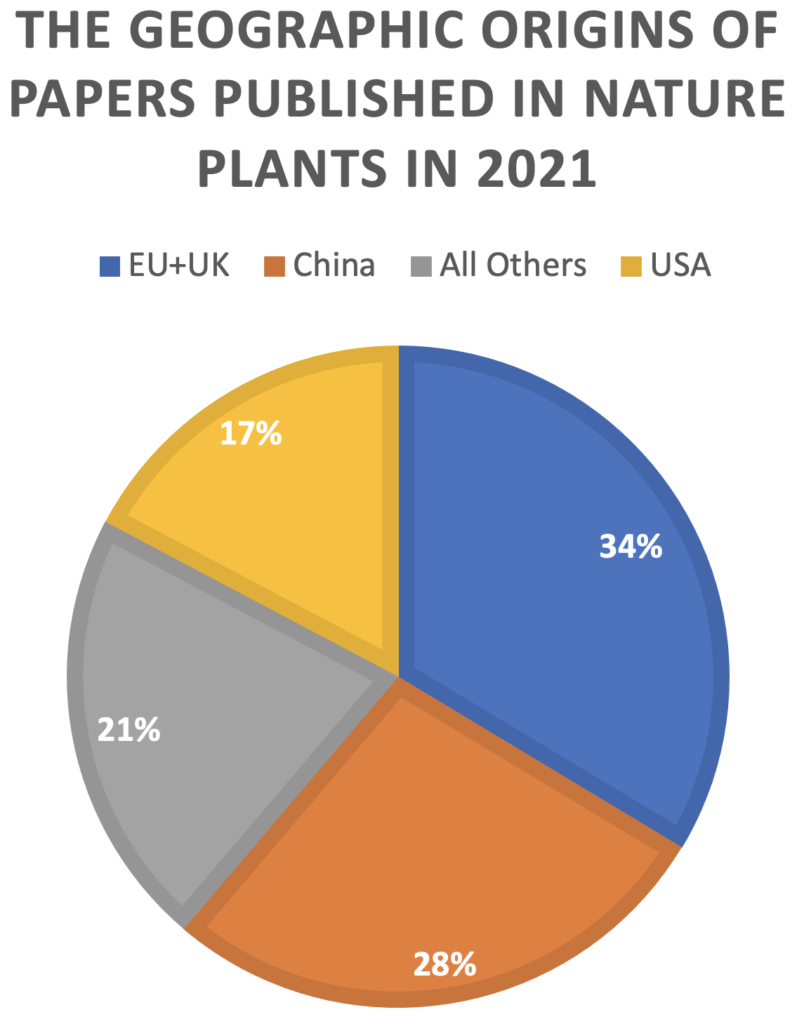Where in the world is important plant biological research happening today? It’s a hard question to answer. I could imagine looking at funding, or citation rates, or total papers published in the field. I can also imagine the downsides and potential for bias in all of those metrics. But I’m a strong believer that even imperfect data is better than none at all and I couldn’t find any useful data on this topic.
So let’s start with the easiest of these imperfect datasets to generate: where in the world are the home institutions of the authors of articles published in plant science journals?
I decided to start with The Plant Cell. The Plant Cell is published by the American Society of Plant Biologists, so we might expect it will have a bias towards more American authors and fewer authors from the rest of the world. One the other hand, among journals focused on plant science, and excluding journals that publish solely reviews*, The Plant Cell historically** has had the highest impact factor***, which has tended to attract a global audience of both readers and authors.
I have the breakdown below the fold, but before you look, take a moment to form your own guesses. What proportion of articles do you think came from the United States? From Europe? From China? From the rest of the world combined?

So there you have it: 40% of the papers published in The Plant Cell had a corresponding author based in China, 28% from the European Union plus the United Kingdom, 16% from the United States and 16% from the rest of the world (Japan and Korea are particularly well represented in this last category). For those of you who had a chance to form your own gut impression before looking at the data, does the data match your prediction? If not, what are the biggest ways that it differs from your expectations?
Personally I found that I was overestimating the size the US based research community by about a factor of 2. Before I ran the numbers, I would have guessed that US authors contributed about 1/3 of articles at selective plant science journals while the current reality at this particular journal is about half that proportion.
So why was my gut so far off from the reality?
One explanation is that this is something particular to The Plant Cell and if I looked at some other journals I’d see a very different pattern. This seems unlikely. As I talked about above The Plant Cell is published by the American Society of Plant Biology so if anything we’d expect a bias towards US more authors rather than fewer authors. But it is also true that while The Plant Cell used to be the king of the hill for high prestige/high impact factor original plant science research more recently that role has been split with two other, newer, journals: Molecular Plant and Nature Plants. Molecular Plant was started in 2008 by the Chinese Academy of Sciences and Chinese Society for Plant Biology. Nature Plants was launched by the same company (Nature Publishing Group, based in London) that runs Nature in 2015. But it cannot hurt to check…
… nope. United States based corresponding authors accounted for 17% of 116 research articles and research letters published in Nature Plants in 2021, and 7% of corresponding authors in 82 research articles published in Molecular Plant in 2021.

Another explanation is simple ascertainment bias. I live in the United States, so I probably interact with more US scientists and so I’m more likely to notice their papers when they come out than a paper from a research group I don’t know. I’m sure this contributes to some extend to why my estimate was so wrong, but I also think I think there may be a third explanation for why I was off by so much in my gut estimate of the contribution of United States scientists to the field of plant biology.
But it requires some more data to test, so more on that next time.
*Most scientific articles are either original research (new experiments, data, analyses) or reviews (which can be anything from simple summaries of recent research articles to synthesizing and proposing new models to explain data or outlining big remaining unknown questions within a field). Since reviews pull together data and ideas from many different studies into one easy to find and easy to digest place, they tend to be read more and cited more.
**This has changed in recent years, more on this below.
***Impact factor is a quantitative metric based on how many new papers cite papers published in a given journal. Like all quantitative metrics, it has lots of problems and potential for bias, but it shapes lots of people’s perceptions of journals and, depending on the country, it may shape how much of a career benefit authors get from a given paper. Long story short, many more people want to publish in journals with high impact factors than those journal are willing to publish, so looking at who succeeds tells us something about who is doing science that a scientific journal’s editorial boards (typically other scientists) think is most exciting. How’s that for circularity?